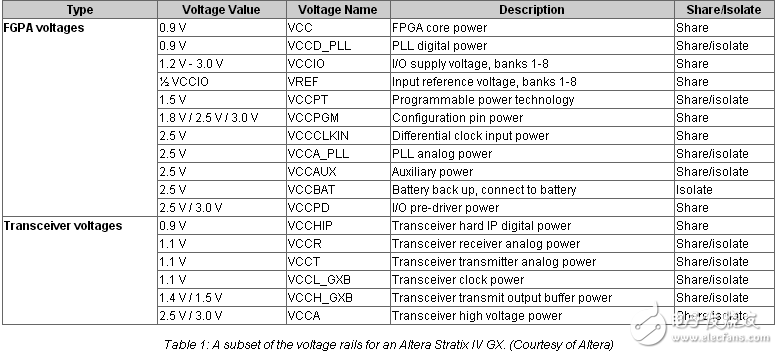
资料下载

FPGA电源需求和电源解决方案
FPGA电源需求和电源解决方案
现场可编程门阵列(FPGA)被发现在许多原型和低到中等体积的产品的心脏。FPGA的主要优点是在开发过程中的灵活性,简单的升级路径,更快的上市时间,和相对较低的成本。一个关键的缺点是复杂性,FPGA往往将一个复杂的片上系统(SoC)。
这种复杂性对电力供应提出了苛刻的要求。为了满足这些挑战,电源需要几个输出和效率和线性稳压器的清洁电源开关稳压器的组合。
本文介绍了FPGAs的特殊功率要求,说明如何设计一个电源,这些聪明的芯片,然后审查选择的电源模块针对FPGA应用程序。

Calculating system power
Powering an FPGA can seem like powering an entire system. The power supply design engineer is faced with the challenge of supplying from three to 15 voltage rails (and sometimes even more); and that’s only the start. FPGAs are typically fabricated using the latest wafer-fabrication techniques that require a low-core voltage, but the power supply also has to be powering multiple rails for specialty blocks and circuitry, provide multiple voltage levels, supply extra current for high-power blocks, and satisfy the requirements of noise-sensitive elements.
Just to make things a little more complex, even FPGAs from the same manufacturer can vary greatly, making it critical that the engineer chooses the best power supply for each chip. That choice depends on factors such as the voltage and power demands for each rail, the rails’ sequencing requirements, and system power-management needs.
The first step in designing an FPGA power supply is to identify the individual voltage rails and their requirements. The FPGA vendor usually supplies a “pin list” that specifies the voltage level for each powered pin that connects to a voltage rail in the device. For example, Table 1shows some of the voltage rails for Altera’s Stratix IV GX FPGA.
声明:本文内容及配图由入驻作者撰写或者入驻合作网站授权转载。文章观点仅代表作者本人,不代表电子发烧友网立场。文章及其配图仅供工程师学习之用,如有内容侵权或者其他违规问题,请联系本站处理。 举报投诉
- 相关下载
- 相关文章







